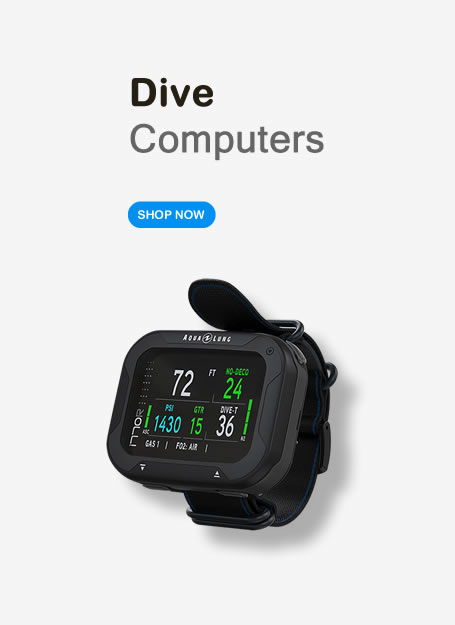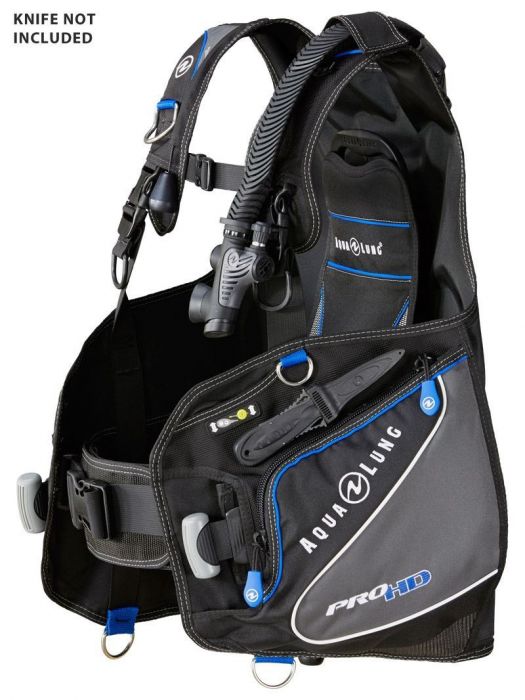
Buying Your First BCD
A good BCD means everything. After I became certified, I have only gone diving a few times where I have not used my own BCD. Those were trips where an unexpected dive opportunity arose or I just couldn't take mine because I couldn't bring it with me. I like using my own BCD, I know exactly where my lower dump value is, where my inflator is, and that I have a torch in my left pocket. If I need to adjust my buoyancy during a dive, it requires little thought.
Getting my BCD was not “love at first sight”, it took some effort to find my perfect match. As a newly certified diver looking to buy your first buoyancy compensator, there will be some doubts in the back of your mind you are getting the right BCD. There are many options on the market and prices that range from under £300 to well over £1,000.
Let’s Start With Style
There are two basic styles that new divers will look at for their first BCD. The Jacket style, also called the vest style by some manufacturers, is the most common. The majority of rental buoyancy compensator are of this type so it is very likely this is the style you trained on. You put it on like a jacket, hence the name, and when the air bladder is inflated it wraps around you. When inflated the air bladder is in front, on the sides and around your back. This style gives you a good deal of support while inflated at the surface. However, some divers feel pressure across their chest when fully inflated. Also, they can create more drag underwater and can be hard to properly trim under different degrees of inflation. These jackets tend to have a pocket on each side.
A new design has become increasingly popular and is also being seen in rental equipment/training equipment. These are the back inflate buoyancy compensator, These BCDs do not have an air bladder in the front or sides. When inflated, the filled air bladder is around your back. Many divers see this as an advantaged because there is no pressure on the chest and it can be easier to maintain trim. They generally do not have pockets, which some divers use. Another difference is at the surface. The back inflated BCD will tend to pitch divers face forward at the surface. However, after becoming accustomed to this effect, divers quickly adjust.
Both of these style jackets have their advantages and disadvantage. However, they mostly come down to a personal preference. It needs to be noted that the back inflated BCD should not be confused with a backplate and wing BCD. A backplate and wing BCD is favored by technical divers. These setups have the diver wearing a backplate with simple straps. You will have a waist strap, shoulder straps, chest straps and a crotch strap. Your dive cylinder is attached and a wing surrounds the cylinder. The wings can be interchanged to adapt to multiple cylinders or different lift requirements.
Gender
For decades, scuba diving was mostly a man’s sport. I know that since the beginning of scuba diving women have been involved, but their numbers were not high enough to justify equipment designed for them. That has changed and now most scuba equipment manufacturers have equipment design for women. Generally, you will find changes in torso length, weight distribution, and strap design. You will also find unisex designs.
Weight System
Integrated weights used to be a feature found on just a high-end BCD. Now they are available on even an entry level BCD. One of the most basic rules of scuba diving is to drop your weights when you have an emergency that requires extra buoyancy. The weight belt, a web belt with a quick release buckle and weights threaded onto the belt, was the way you added weight, but still allow it to be ditched rapidly if needed. However, not everyone is comfortable wearing a belt and many have difficulties keeping them in place.

A BCD with integrated weights is a solution for those who do not want to wear a belt. To use a BCD with this feature, the diver will place the weight needed into a pair of pouches. These are then slid into a pocket designed to hold them and are secured. In case of an emergency, the diver or his dive buddy simply pulls on a handle that will allow the pouch to be pulled free and dropped. These BCD will also have two pouches on the back. Weights can be placed in these pouches to help distribute the weigh for better trim. These rear pouches are not ditchable, so only a small portion of the extra weight is placed in them.
Entry Level or Something better
When you first start looking at the different buoyancy compensator devices on the market, it can be overwhelming. Your BCD will be one of the two most expensive purchases in your new kit. However, with proper care, it will last a long time. You will sometimes see a BCD shown as an entry level. There is no real definition of what is entry level. The main difference between something that is entry level and something more advanced is mostly in the materials used and attention to detail. If you are buying a brand name, then you do not have to worry if the BCD will function properly. The material used in making a lower cost BCD may not be as durable as a high-end model will have but it will acceptable. The BCD you used when you became certified is likely has been used several dives each week for multiple dives by students who do not know what they are doing. It will likely be used for two or more years before it is sold to someone. That BCD was likely one of the least expensive models available.
As you move up in price, you will see longer lasting materials used and more extras. Which of those extras you will need is based on your own diving. Many divers start diving with extra equipment and find a need to clip items to their BCD. Higher end BCD generally have more and better means of connecting these items. The ability to carry extra items can also mean that a greater lift may be needed. Higher end BCD often have a higher lift capacity. You may never need the extra lift, just something to consider.
Travel BCD
Another new term often seen now days is a “travel” BCD. In this day and age where airlines are charging extra for everything and there are weight limits on smaller aircraft, divers are more concern on how heavy their dive kit is. Some equipment manufacturers have developed BCDs using lighter weight materials and design changes that allow the BCD to be folded to take up less space.
If you think you may travel often to dive, this might be a consideration.
Fit
The most important factor in which BCD to get is the fit. You need to try on the BCD for size. You need to see that it is a firm fit but not too tight. When fully inflated it does not make it difficult to breathe. Also important is your range of motion. You should feel comfortable in all of your movements. Nothing should pinch you or rub you. Something irritable try on a BCD could be a trigger in a stress situation. You need to make sure that all of the controls are easily reached with a normal motion. You can not be expected to stretch to reach a dump valve in an emergency.
Take a look at the BCD your local rental shop has and try out a few brands and designs if possible. Find out what you like best and go look for something that matches it.





All comments